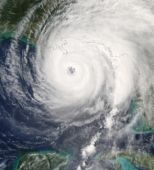Hurricane Season: Learning Diabetic Treatment Lessons from Sandy
So far, the 2016 hurricane season has been manageable, with most hurricanes either diminishing into tropical storms or blowing out to sea before they reach the continental United States. Natural disasters have long-term impacts on diabetic patients.

For most Americans, hurricanes mean a trip to the store for bread and batteries, and some preventive measures to batten down the hatches. For endocrinologists and the diabetics they treat, hurricanes, or any natural disaster, can mean real trouble if they disrupt our infrastructure. Natural disasters have long-term impacts on diabetic patients. After Hurricane Katrina, many diabetic patients had trouble with glycemic control and quality of life for months or years, likely exacerbated by stress. So far, the 2016 hurricane season has been manageable, with most hurricanes either diminishing into tropical storms or blowing out to sea before they reach the continental United States.
BMJ Open Diabetes Research & Care has published a timely study that looks at history to identify needs and problems experienced by people with diabetes after severe storms.
The researchers performed a geospatial analysis of New York City diabetic adults' use of emergency departments (ED) during the week after Hurricane Sandy disabled parts of New York City and New Jersey in 2012. Looking at patients with diabetes only who resided in the most vulnerable disaster areas, they looked at demographics, insurance status, and medical comorbidities.
Rescuers "zone" evacuation needs. In New York City's highest level evacuation zone, Medicare patients had significant increases in post disaster ED visits for a primary or secondary diagnosis of diabetes, and were considerably more likely than other people with diabetes to need ED care. From this, the researchers note that the elderly (aged 65 or older) had appreciably increased needs. This was especially true if they had complex medication regimens, relied on caregivers, or needed medical equipment.
Among patients with diabetes who were seen in the ER, the most common comorbidities were hypertension, recent procedure, and chronic skin ulcers.
ED healthcare providers saw more diabetic patients than usual for myocardial infarction, prescription refills, drug dependence, and dialysis.
They identify several groups of diabetics for whom peri-disaster care should be galvanized: diabetic adults who need medication; patients who have had recent procedures; and those at risk for cardiovascular events including heart attacks. For these patients, clinicians need to help patients prepare adequately and anticipate longer periods of service disruption.
Related Coverage:
- Financial Stability Affects Adjustment to Diabetes Diagnosis
- Major Disasters and the Mental Health Community
- Physicians Need to Plan for Disasters Assuming They Will Happen